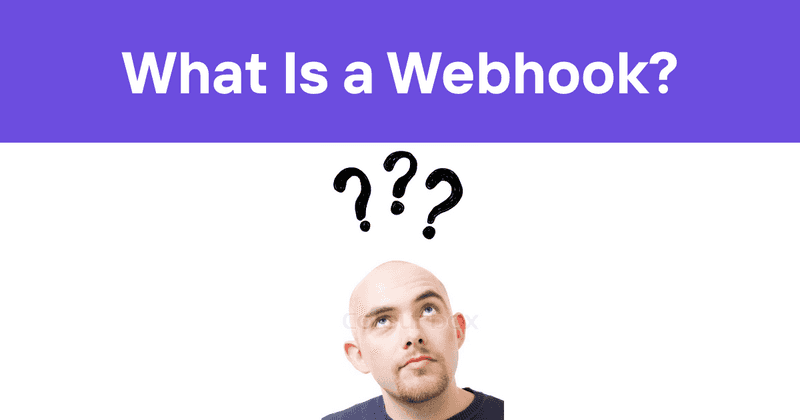Webhooks Unveiled: Powering Real-Time Web Apps
Ah, webhooks. Those magical little messengers of the web that keep our apps talking to each other behind the scenes. If you've ever wondered how your favorite services seem to know what's happening across the internet in real-time, webhooks are often the unsung heroes making it all possible.
As a developer who's implemented more webhooks than I care to count, I've seen firsthand how these simple yet powerful tools can transform clunky, poll-heavy systems into sleek, event-driven machines. But I also know they can be a bit mystifying at first glance. So grab a coffee (or beverage of choice), and let's dive into the wonderful world of webhooks!
Table of Contents
- What Are Webhooks Anyway?
- How Webhooks Work Their Magic
- Webhooks vs. Traditional APIs
- Common Use Cases for Webhooks
- Implementing Webhooks: A Developer's Perspective
- Security Considerations
- Webhooks in Action: Real-World Examples
- Best Practices for Working with Webhooks
- Troubleshooting Webhook Woes
- The Future of Webhooks
- Wrapping Up: Why Webhooks Matter for Modern Web Apps
What Are Webhooks Anyway?
Picture this: You're waiting for an important package. Instead of constantly checking your doorstep or refreshing the tracking page, imagine if the delivery service could just ping your phone the moment your package arrives. That's essentially what webhooks do for web applications.
At their core, webhooks are automated messages sent from apps when something happens. They're a way for different systems to communicate with each other in real-time, without constant back-and-forth checking.
Technically speaking, a webhook is an HTTP POST request that one application sends to another when a specific event occurs. It's like a "phone call" between apps, but instead of ringing, the receiving app gets a data payload it can act on immediately.
How Webhooks Work Their Magic
Let's break down the webhook process:
-
Setup: An app (let's call it App A) allows users or developers to register a URL for a webhook. This URL points to a specific endpoint in another app (App B) that's waiting to receive webhook data.
-
Event Occurs: Something interesting happens in App A. Maybe a user makes a purchase, a new comment is posted, or a file finishes uploading.
-
Webhook Triggered: App A recognizes this event and says, "Hey, I should tell someone about this!" It prepares a payload of data about the event.
-
HTTP POST: App A sends an HTTP POST request to the registered webhook URL, delivering the payload to App B.
-
App B Responds: The receiving application (App B) gets the webhook, processes the data, and usually sends back a quick "got it!" response.
-
Action Time: App B can now do something with this real-time information - update a dashboard, trigger an email, or kick off a complex workflow.
It's beautifully simple, isn't it? No constant polling, no wasted resources checking for updates that haven't happened yet. Just a quick tap on the shoulder when something important goes down.
Webhooks vs. Traditional APIs
Now, you might be thinking, "Can't we just use regular APIs for this?" And you're not wrong to ask. APIs are great, but they have their limitations when it comes to real-time data.
Traditional APIs typically work on a request-response model. Your app has to constantly ask, "Hey, any updates?" It's like a kid on a road trip repeatedly asking, "Are we there yet?" Annoying and inefficient.
Webhooks, on the other hand, flip this model on its head. Instead of your app pestering the API for updates, the API promises to let your app know when something happens. It's more like the GPS alerting you when it's time to take the next exit.
Here's a quick comparison:
| Feature | Traditional APIs | Webhooks |
|---|---|---|
| Data Retrieval | Pull (client initiates) | Push (server initiates) |
| Real-time Updates | Requires polling | Instant notifications |
| Resource Usage | Can be inefficient with frequent checks | More efficient, event-driven |
| Complexity | Generally simpler to implement | May require more initial setup |
| Use Case | Good for on-demand data fetching | Ideal for event-driven architectures |
Both have their place, and many modern systems use a combination of APIs and webhooks for optimal performance and functionality.
Common Use Cases for Webhooks
Webhooks are the silent workhorses powering many features we take for granted in modern web apps. Here are some common scenarios where webhooks shine:
-
Payment Processing: When a customer completes a purchase, a webhook can trigger order fulfillment, email receipts, and update inventory systems.
-
Version Control: GitHub uses webhooks to notify CI/CD pipelines when new code is pushed, automatically kicking off build and deployment processes.
-
CRM Updates: A webhook could update your CRM when a customer fills out a form on your website, ensuring sales teams have the latest info.
-
IoT Device Management: Smart home devices often use webhooks to send alerts or trigger actions based on sensor data.
-
Messaging Apps: When you receive a new message, a webhook could push a notification to your phone or update other connected devices.
-
Content Management: Webhooks can notify CDNs to invalidate caches when content is updated in a CMS.
-
Monitoring and Alerts: System monitoring tools use webhooks to send alerts when issues are detected, allowing for rapid response to problems.
The list goes on, but you get the idea. Anywhere you need real-time updates or event-driven actions, webhooks are probably lurking behind the scenes.
Implementing Webhooks: A Developer's Perspective
Alright, fellow code wranglers, let's get our hands dirty and look at how to actually implement webhooks in our apps. I'll walk you through both sides of the equation: sending webhooks and receiving them.
Sending Webhooks
When you're the one dispatching webhooks, you're essentially saying, "Hey, I've got some news for you!" Here's a basic example in Python using the requests library:
import json
def send_webhook(webhook_url, data):
headers = {'Content-Type': 'application/json'}
response = requests.post(webhook_url, data=json.dumps(data), headers=headers)
return response.status_code
# Usage
webhook_url = "https://example.com/webhook"
data = {
"event": "new_user_signup",
"user_id": 12345,
"timestamp": "2024-03-15T14:30:00Z"
}
status = send_webhook(webhook_url, data)
print(f"Webhook sent. Status code: {status}")
Pretty straightforward, right? We're just making an HTTP POST request with some JSON data. The key is to make sure your payload is consistent and well-documented so the receiving end knows what to expect.
Receiving Webhooks
On the flip side, when you're setting up an endpoint to receive webhooks, you need to be ready to accept POST requests and do something useful with the data. Here's a simple Flask example:
app = Flask(__name__)
@app.route('/webhook', methods=['POST'])
def webhook():
if request.method == 'POST':
data = request.json
# Process the webhook data
print(f"Received webhook: {data}")
# Do something based on the event
if data['event'] == 'new_user_signup':
# Maybe send a welcome email?
pass
return jsonify({'status': 'success'}), 200
else:
return jsonify({'status': 'bad request'}), 400
if __name__ == '__main__':
app.run(debug=True)
This sets up a basic endpoint at /webhook that accepts POST requests, processes the incoming data, and sends back a response.
Of course, in a production environment, you'd want to add proper error handling, validation, and possibly authentication to ensure the webhooks are coming from a trusted source.
Security Considerations
Now, I don't want to be a buzzkill, but we need to talk about security. Webhooks are powerful, which means they can be dangerous if not implemented carefully. Here are some key points to keep in mind:
-
HTTPS: Always use HTTPS for your webhook endpoints. No exceptions.
-
Authentication: Implement some form of authentication for your webhooks. This could be a shared secret token, API keys, or even OAuth.
-
Validation: Always validate the incoming data. Don't blindly trust what's being sent.
-
Rate Limiting: Implement rate limiting to prevent abuse of your webhook endpoints.
-
Timeouts: Set reasonable timeouts for webhook requests to prevent hanging connections.
-
Retry Logic: Have a strategy for retrying failed webhook deliveries, but also know when to give up.
-
Logging: Keep detailed logs of webhook activity for debugging and security audits.
Remember, opening up an endpoint to receive data from external sources is essentially creating a new attack surface for your application. Treat it with the respect (and paranoia) it deserves!
Webhooks in Action: Real-World Examples
Let's look at some concrete examples of how webhooks are used in popular services:
-
GitHub: GitHub's webhooks allow you to build or set up integrations which subscribe to certain events on GitHub.com. When one of those events is triggered, GitHub will send an HTTP POST payload to the webhook's configured URL. For example, you could set up a webhook to trigger a deployment whenever code is pushed to a specific branch.
-
Stripe: Stripe uses webhooks to notify your application when an event happens in your account. For example, when a customer's payment succeeds, you can use a webhook to automatically email them a receipt or update your database.
-
Zapier: Zapier's entire business model is built around webhooks (though they abstract away much of the complexity). They allow you to connect different apps and automate workflows by listening for events in one app and triggering actions in another.
-
Slack: Slack's incoming webhooks allow you to post messages from external sources into Slack. This is commonly used for integrating various tools and services with team communication channels.
-
IFTTT (If This Then That): While not explicitly called webhooks, IFTTT's Maker service allows you to create recipes that are triggered by or result in web requests, effectively functioning as webhooks.
These examples just scratch the surface. The beauty of webhooks is their versatility - they can be adapted to almost any situation where you need real-time communication between systems.
Best Practices for Working with Webhooks
After wrestling with webhooks for years, I've picked up a few tricks. Here are some best practices to keep in mind:
-
Keep It Simple: Start with the minimum viable payload. You can always add more data later if needed.
-
Versioning: Version your webhook APIs. This allows you to make changes without breaking existing integrations.
-
Idempotency: Design your webhook consumers to be idempotent. In other words, receiving the same webhook multiple times should not result in duplicate actions.
-
Async Processing: Process webhooks asynchronously when possible. This allows you to respond quickly to the sender while handling time-consuming tasks in the background.
-
Monitoring: Set up monitoring for your webhook systems. Track success rates, response times, and error rates.
-
Documentation: Provide clear, comprehensive documentation for your webhooks. Include payload examples, expected responses, and potential error codes.
-
Testing Tools: Offer tools or endpoints for developers to test webhooks without affecting production data.
-
Signature Verification: When sending webhooks, include a signature in the headers that the recipient can use to verify the webhook's authenticity.
-
Timeout Handling: Be prepared to handle timeouts gracefully, both when sending and receiving webhooks.
-
Fallback Mechanisms: Have a plan B for critical data. If webhooks fail, consider alternative methods like polling or manual sync options.
Troubleshooting Webhook Woes
Even with the best planning, things can go wrong with webhooks. Here are some common issues and how to address them:
-
Webhook Not Firing:
- Check event triggers in the sending system
- Verify webhook configurations
- Look for any error logs in the sending system
-
Webhook Received But Not Processed:
- Check receiving endpoint logs
- Verify payload format matches expectations
- Ensure any required authentication is correct
-
Intermittent Failures:
- Implement retry logic with exponential backoff
- Check for rate limiting issues
- Monitor network stability between systems
-
Duplicate Webhooks:
- Implement idempotency keys
- Check for issues in the sending system's retry logic
- Verify your processing logic can handle duplicates gracefully
-
Security Issues:
- Regularly rotate webhook secrets
- Implement IP whitelisting if possible
- Use HTTPS for all webhook traffic
-
Performance Problems:
- Optimize webhook payload size
- Process webhooks asynchronously
- Consider batching webhooks for high-volume events
Remember, good logging is your best friend when troubleshooting webhook issues. The more visibility you have into the entire process, the easier it will be to pinpoint and resolve problems.
The Future of Webhooks
As we hurtle towards an increasingly interconnected digital future, webhooks are poised to play an even more crucial role. Here are some trends I'm keeping an eye on:
-
Standardization: Efforts like CloudEvents are working to create a common specification for event data across cloud services, which could make webhooks even more interoperable.
-
Serverless Integration: As serverless architectures become more prevalent, webhooks are a natural fit for triggering cloud functions and microservices.
-
IoT and Edge Computing: Webhooks could become a key mechanism for real-time communication between IoT devices and edge computing nodes.
-
AI/ML Integration: Webhooks might be used to trigger machine learning model retraining or to feed real-time data into AI systems.
-
Enhanced Security: We'll likely see more advanced security measures for webhooks, possibly leveraging blockchain or other decentralized technologies for verification.
-
GraphQL Subscriptions: While not exactly webhooks, GraphQL subscriptions offer a similar push-based model for real-time updates that could complement or compete with traditional webhooks.
The future is exciting, and I can't wait to see how webhooks evolve to meet new challenges and opportunities in the world of web development.
Wrapping Up: Why Webhooks Matter for Modern Web Apps
Whew! We've covered a lot of ground, haven't we? From the basics of what webhooks are to their implementation, security considerations, and future prospects, it's clear that these little bits of automated communication are a big deal in modern web development.
Webhooks represent a shift in how we think about communication between systems. Instead of constant polling and checking, we can create event-driven architectures that are more efficient, responsive, and scalable. They allow us to build real-time features that would be impractical or impossible with traditional API methods.
As we've seen, webhooks are already powering critical features in many of the services we use every day. From triggering builds in CI/CD pipelines to updating dashboards with real-time data, webhooks are the silent workhorses of the web.
But implementing webhooks effectively requires careful planning and attention to detail. Security, reliability, and performance are all crucial considerations. It's not enough to just set up a webhook and forget about it - ongoing monitoring and maintenance are essential.
As you build and scale your web applications, consider how webhooks might help you create more responsive, efficient systems. Could real-time updates improve your user experience? Could automated workflows save your team time and reduce errors? Chances are, there's a webhook for that.
And speaking of monitoring and real-time updates, this is where a tool like Odown can be invaluable. With Odown's website uptime monitoring, you can set up webhooks to get instant notifications if your site goes down. Their SSL certificate monitoring can alert you well before a cert expires, preventing those dreaded "Your connection is not private" warnings.
But perhaps most relevant to our webhook discussion is Odown's status page functionality. You can use webhooks to automatically update your public or private status pages when incidents occur or are resolved. This kind of real-time communication can significantly improve transparency and trust with your users.
In the end, webhooks are all about creating more connected, responsive web applications. Whether you're just starting to explore their potential or you're a webhook wizard looking to optimize your systems, I hope this deep dive has given you some food for thought. Now go forth and hook all the things!



